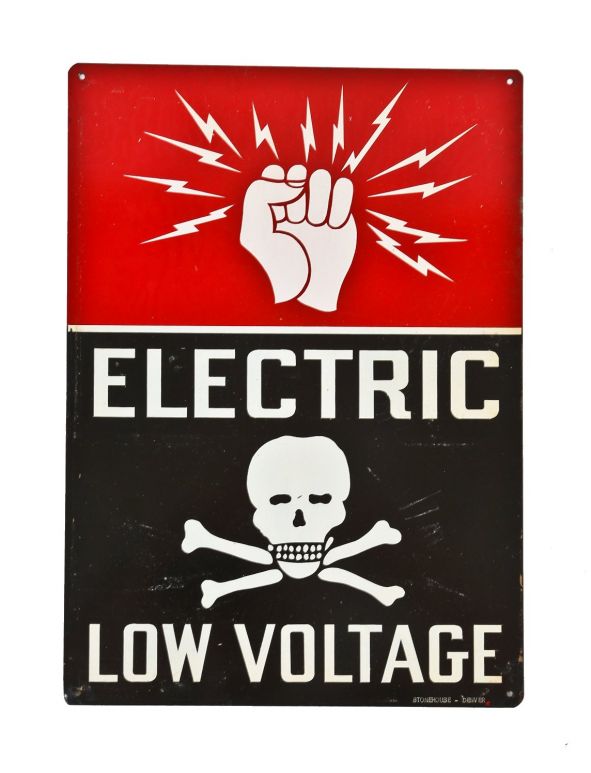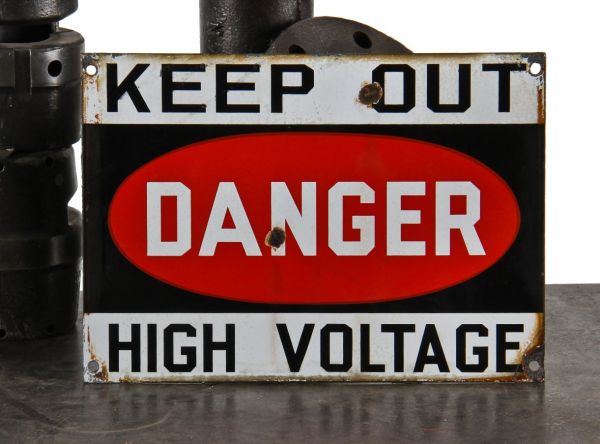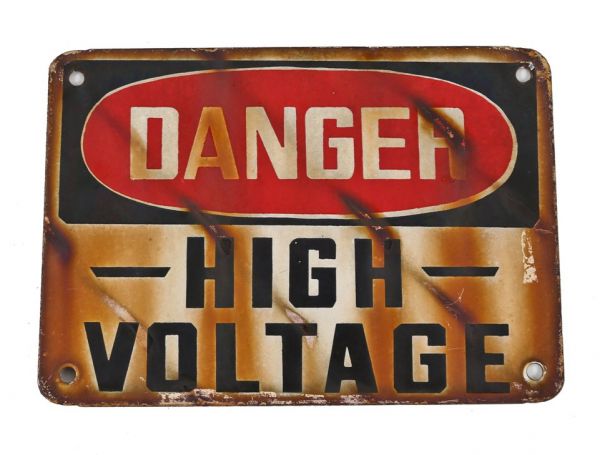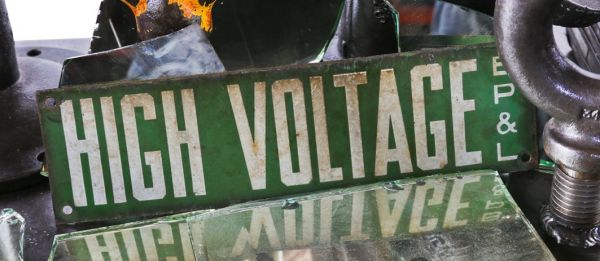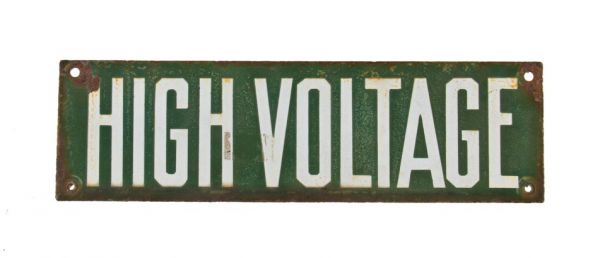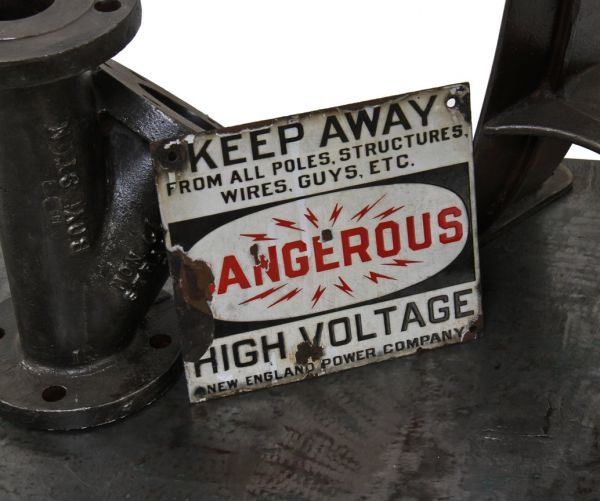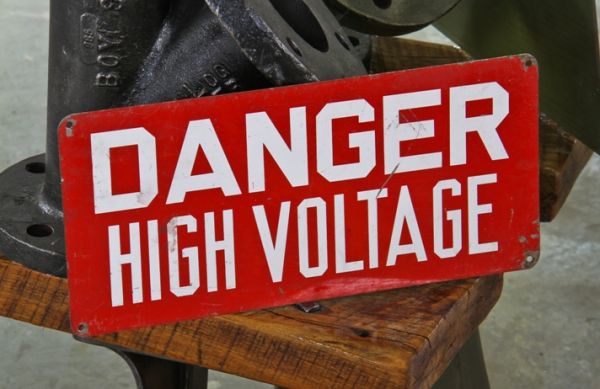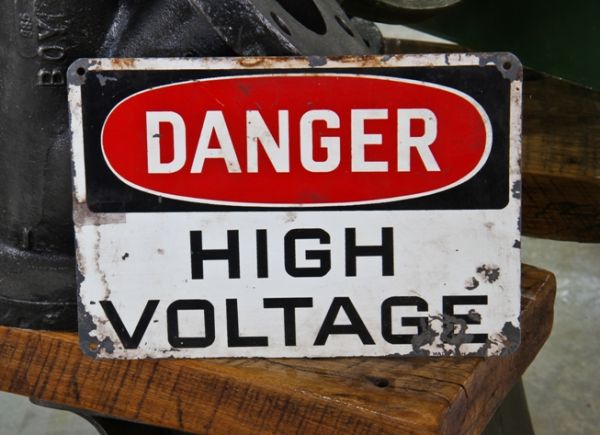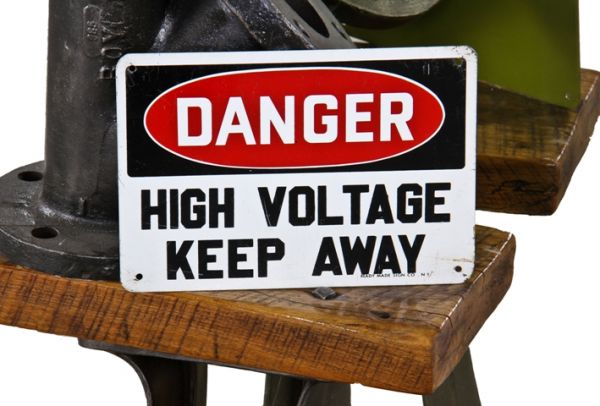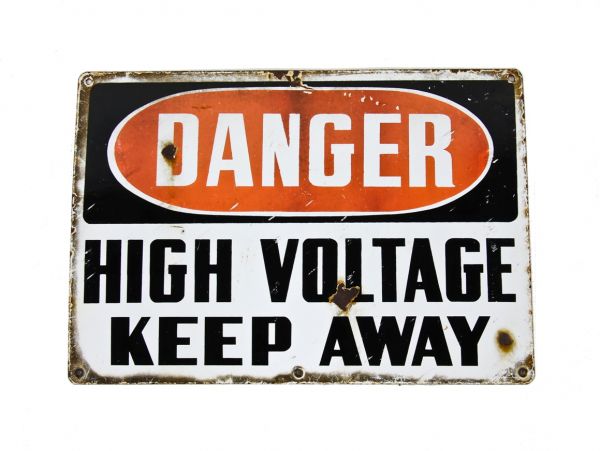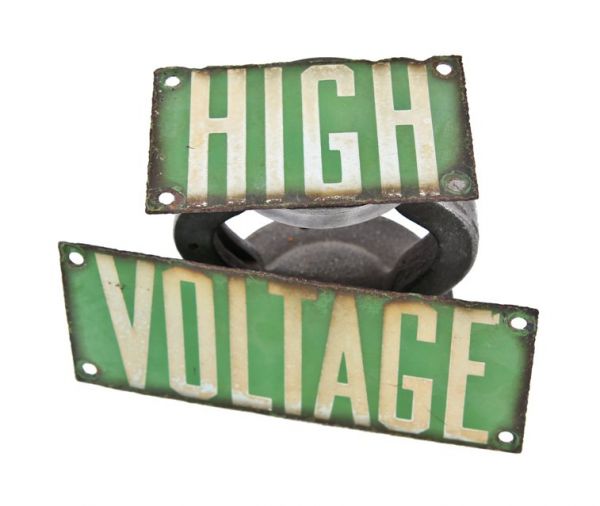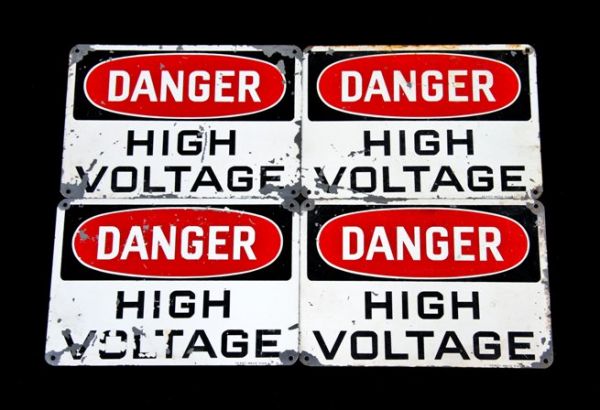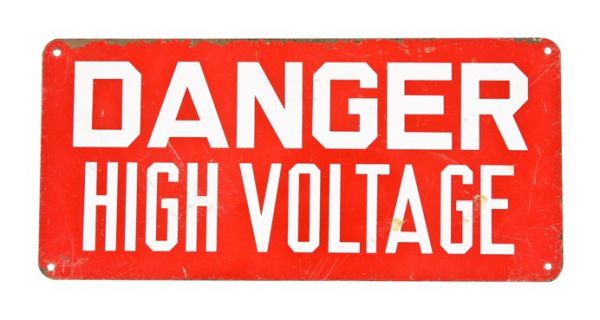original late 1940's "new old stock" american industrial factory "low voltage" baked enameled steel sign with skull and crossbones
SOLD
Out of stock
SKU
UR-19782-14
stonehouse steel sign co., denver, co.
vibrantly colored c. 1940's american industrial "new old stock" single-sided stamped steel "low voltage" warning or cautionary sign fabricated by the stonehouse steel sign company, denver, co. the light gauge steel sign features a black and red (universal color for danger) color scheme. the graphics consists of a skull and cross bones and a human fist surrounded by lightning bolts. the sign would have been mounted against a wall in a factory or substation setting with "live" devices containing low-voltage with high electric current. the sign remains in great overall condition. the pre-drilled holes in each of the sign's corners are for mounting purposes. the stonehouse sign company traces its roots chicago, il., where william stonehouse opened a sign shop in 1863. there he taught his son, james wesley stonehouse, the art of gold leaf lettering on store front windows for banks, offices, and other commercial businesses. in 1904, james moved west with the gold mining boom and set up shop in douglas, arizona, advertising, “j.w. stonehouse, painter of good signs, pictures and framing.” after following the mining boom from place to place, j.w. moved to the victor-cripple creek region of colorado. it was here that the "accident prevention" sign business was born. mining was one of the most dangerous industries to work in during this time. miners used bell signals to control the hoists that raised and lowered men and material in the mine shafts. since these signals varied by location and state, there were numerous accidents due to miners getting confused about what signal defined what action. mr. stonehouse saw a need for increased safety and communication to protect the workers. he went to the colorado bureau of mines and lobbied for standardized bell signals for all mines in colorado. confident that his logic would be acted on, stonehouse printed standardized bell signal signs, which would help reduce accidents and injuries. when the mining bureau enacted the standard, he was ready to sell from inventory his silk screen printed signs, which provided an easy way for the mine operators to comply with the new regulations. stonehouse's interest in worker safety and his colorado state code of mine bell signals - considered one of the first standardized industrial safety sign - resulted in the creation of the accident prevention sign industry. as the concept of “workplace safety” was beginning to take hold in america, the contributions of j.w. stonehouse and stonehouse signs were beginning to be felt in colorado and across the nation. in 1914, stonehouse was moved to denver, with a continued emphasis or focus on concern for safety and standardization. stonehouse's efforts resulted in the creation of the “danger”, “caution” and “notice” panels that are in widespread use today.
You Might Also Like
WORDLWIDE SHIPPING
If required, please contact an Urban Remains sales associate.
NEW PRODUCTS DAILY
Check back daily as we are constantly adding new products.
PREMIUM SUPPORT
We're here to help answer any question. Contact us anytime!
SALES & PROMOTIONS
Join our newsletter to get the latest information

